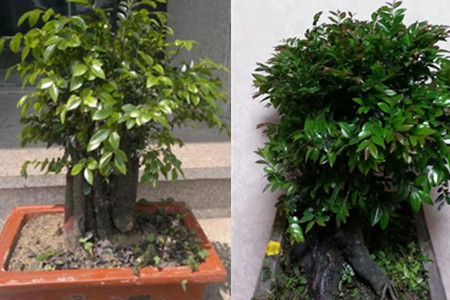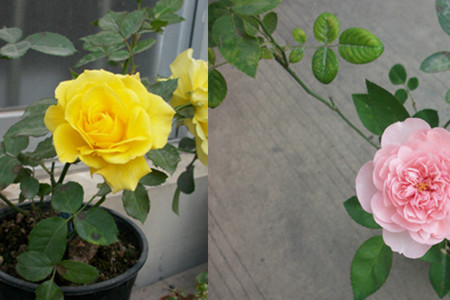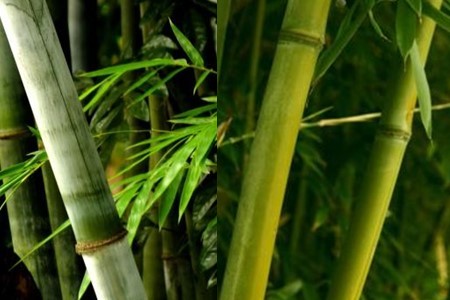It is difficult to tell the true from the false of lobular red sandalwood bonsai from three aspects to teach you to distinguish easily.

Lobular red sandalwood bonsai is now the new favorite in the flower-and-bird market. It has captured many people who love flowers and trees with its elegant and simple appearance. However, due to the slow growth rate of red sandalwood, it takes a long time to grow a bonsai, so the price of red sandalwood bonsai remains high. For bonsai lovers, the high price also reflects the value of bonsai, or enjoy it. But the most gripping thing is: spent a lot of money, but bought a fake lobular rosewood!
An experienced person once revealed that 99% of the lobular red sandalwood bonsai sold on the market is a plant of the persimmon family, called black bone tea! This kind of plant and lobular red sandalwood are actually two things that have nothing to do with each other! Are you a little surprised and sigh that the water in this is too deep?
How to tell the true and false of lobular red sandalwood bonsai? In fact, it is not difficult to distinguish between the characters of the two plants. We decompose it from three aspects, so that you can easily distinguish between "true and false Li Kui".
First, plant nature.
1. Black bone tea, also known as Xiaoguo persimmon and Fenggang persimmon, is very common in Taiwan and southern China. It's a shrub with very small leaves. The so-called shrubs are those that are not tall or big, let alone become wood and make furniture.
2. Lobular red sandalwood is a kind of tall tree. The wood is thick and solid and has strong stability, so it is an excellent wood for furniture. However, since it takes 800 years to grow into wood, the furniture made of this wood is very expensive.
Second, shape
1. Leaves
The leaves of black bone tea are very small, shaped like a chicken heart, growing relatively, and arranged in strings on both sides of the branches. As far as the shape of bonsai is concerned, this kind of black bone tea leaves will look more elegant and beautiful.
Lobular red sandalwood is a tree, the leaves are very large, almost round, but also opposite, but there are only about three to five leaves on a branch, it is not very gentle to make bonsai. If you have seen a real lobular rosewood, you can easily distinguish between the two plants. It's just that lobular red sandalwood is not often seen in daily life, so let businesses have time to drill and "bully" people they don't know.
2. Branches and stems
The branches of black bone tea are rough, the bark is black, and most of them have some vertical stripes. The thinner branches are white-green, and the branches that grow to the size of 1CM will turn black.
The trunk of lobular red sandalwood is straight, dark brown bark, relatively smooth. When you grow up, the bark will crack and form some grid-like patterns. The new folded or cross-section of the branch is bright red or orange, and the old cut will turn purple-black or purple. There is a purple-black grain in the wood grain.
Weight and sap
Woodiness is the characteristic of lobular red sandalwood, so put the same-sized branches of lobular red sandalwood and black bone tea in water, the leaflet red sandalwood will sink much faster.
The sap of lobular red sandalwood is red, which is broken off to scratch the white wall, leaving purplish red scratches, while black bone tea does not.
The color of the old red sandalwood is so strong that it will not fall out if it is put in the water. But the new and tender red sandalwood will be soaked in water, and in ancient times, the water soaked out of the red sandalwood can be used as a red dye. Can also plane a little rosewood flowers soaked in liquor, will be immediately decomposed into viscose pink substances. Generally speaking, red sandalwood that makes bonsai will not always go anywhere, so this is also a very effective way to identify.
The bonsai made of lobular red sandalwood is not that there is no bonsai, but that the number is very small. Because the growth rate is too slow, the tree stem is too straight and the root system is too deep, it is not easy to cultivate a beautiful bonsai, it is impossible to have so many lobular red sandalwood bonsai on the market.
And from the perspective of bonsai appreciation, the appreciation value of black bone tea bonsai is also higher than that of lobular red sandalwood. Because:
1. Black bone tea has slow growth rate, shade resistance and strong resistance to diseases and insect pests, so it is suitable to be put indoors.
2. Black bone tea is evergreen all the year round, it is easy to shape, the branch shape rises from the forest shape, and can be made into some root-like shapes, which has high ornamental value.
It's just that in order to seek greater benefits, businessmen let it sell at a high price in the name of lobular rosewood. In fact, black bone tea is also very aggrieved.
The value of lobular red sandalwood bonsai
Lobular red sandalwood is the raw material of mahogany furniture and belongs to scarce resources. Many people will invest in planting lobular red sandalwood. The mature lobular red sandalwood has a remarkable reputation and has a very high market valuation. As a flower lover, if only to watch lobular red sandalwood, it is also a well-deserved first choice. Lobular red sandalwood belongs to one of many tree species, the leaves are verdant and dense, and the feeling of spring is very obvious. Give people a suddenly enlightened state of mind.
Have you learned how to deal with the leafy red sandalwood bonsai with fallen leaves? If your lobular red sandalwood has lost its leaves, please deal with it in time. We cherish our plants, and the plants will repay you with their beauty.
Treatment of falling leaves of lobular red sandalwood bonsai
Lobular red sandalwood is a tropical plant, has a great demand for water, if not watered, it will cause withered leaves, thus falling. So if your lobular rosewood is withered, then you should pay attention to watering every few days. But not too much watering, most plants too much watering will cause rotten roots, so it will also lose leaves.
Another possibility of withered leaves is soil consolidation, because the soil is hardened and impervious, so the poured water can not enter the roots, causing the leaves to lose water and dry up and fall. You can choose some soft soil to grow lobular red sandalwood.
Lobular red sandalwood leaves are also due to lack of light, because lobular red sandalwood is a green plant, the need for photosynthesis is relatively strong, so it needs sufficient light to provide enough nutrients for its own growth. So it is best to put your lobular red sandalwood in the sunny place to grow.
In addition, you should also pay attention to the impact of diseases and insect pests on lobular red sandalwood, as well as the appropriate amount of fertilizer in the maintenance process.
- Prev

Introduction of rose cuttage technology to teach you how to propagate plants
Rose, also known as monthly red, is an evergreen semi-evergreen low shrub of Rosaceae. Rose flowers, usually red, or pink, occasionally white and yellow, can be used as ornamental plants, can also be used as medicinal plants, also known as rose flowers
- Next

How long does the bamboo have long roots and what is the mode of propagation?
There are many varieties of bamboo, belonging to perennial plants of the family Gramineae. Concentrated in the subtropics and tropics, it grows very fast, and some varieties of bamboo shoots are edible. Let's find out how long it takes for its roots to grow.
Related
- Fuxing push coffee new agricultural production and marketing class: lack of small-scale processing plants
- Jujube rice field leisure farm deep ploughing Yilan for five years to create a space for organic food and play
- Nongyu Farm-A trial of organic papaya for brave women with advanced technology
- Four points for attention in the prevention and control of diseases and insect pests of edible fungi
- How to add nutrient solution to Edible Fungi
- Is there any good way to control edible fungus mites?
- Open Inoculation Technology of Edible Fungi
- Is there any clever way to use fertilizer for edible fungus in winter?
- What agents are used to kill the pathogens of edible fungi in the mushroom shed?
- Rapid drying of Edible Fungi

